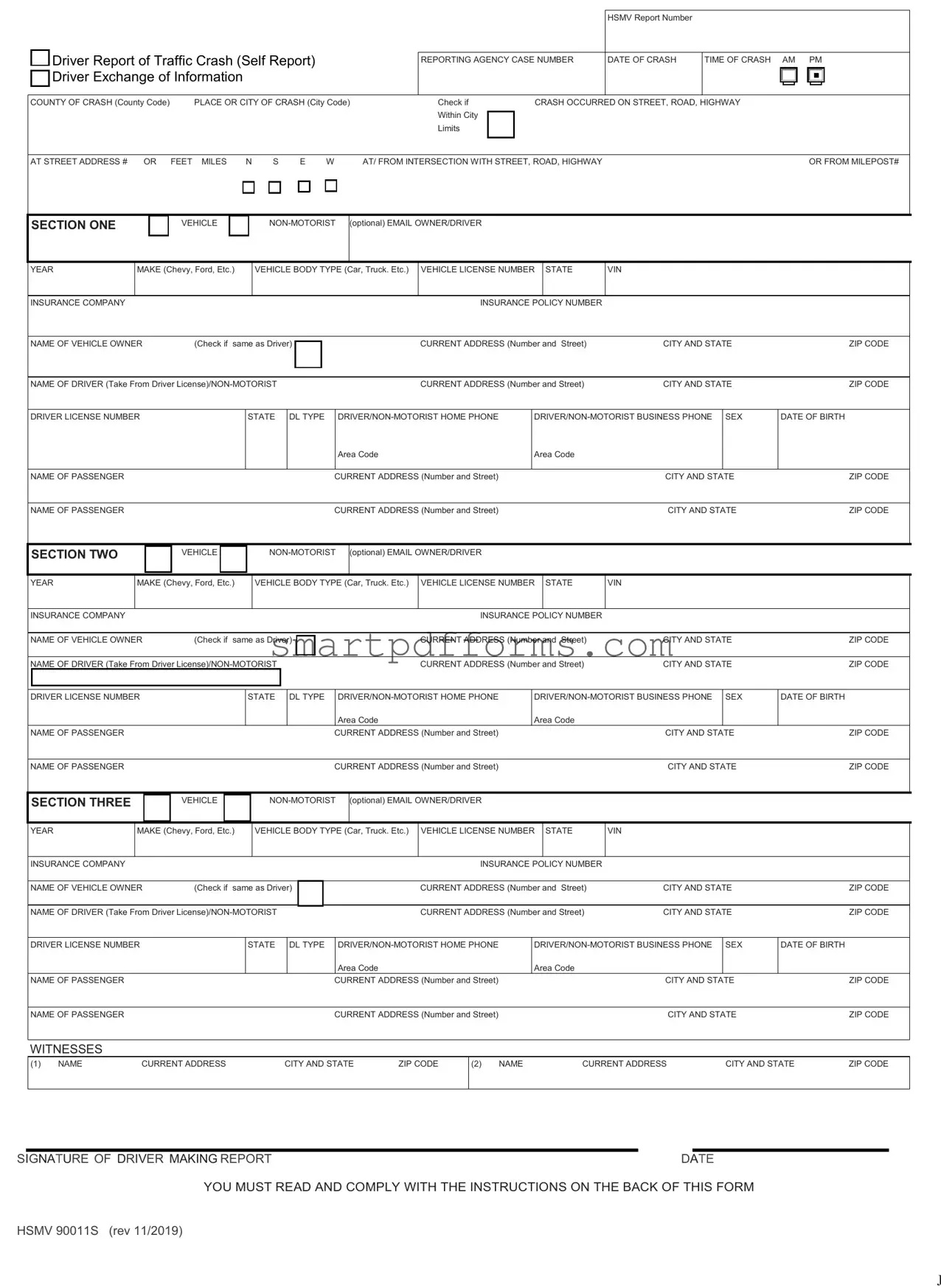In the state of Florida, navigating the aftermath of a traffic crash involves dealing with a critical and comprehensive document known as the Florida Traffic Crash Report form. This form serves as a multipurpose tool designed for various stakeholders, including drivers, law enforcement agencies, and insurance companies. Divided into several sections, it meticulously gathers detailed information about the crash, spanning from the basic identification details of the parties involved (drivers, vehicle owners, and passengers) to more specific data such as the date, time, and exact location of the crash. Notably, it includes fields for the reporting of vehicle specifics such as make, body type, license number, and insurance details. It also addresses the requirement for drivers involved in certain types of crashes, which don't necessitate law enforcement reporting, to submit a written report of the incident to the department within a set timeframe. The form is designed not just for record-keeping but also serves as vital documentation for insurance claims and legal scrutiny. It underscores the importance of accurate and timely submission of information following a traffic incident, necessitating a clear understanding of its components by anyone who finds themselves navigating the aftermath of a vehicle crash in Florida.


 Driver Report of Traffic Crash (Self Report)
Driver Report of Traffic Crash (Self Report) 
 Driver Exchange of Information
Driver Exchange of Information